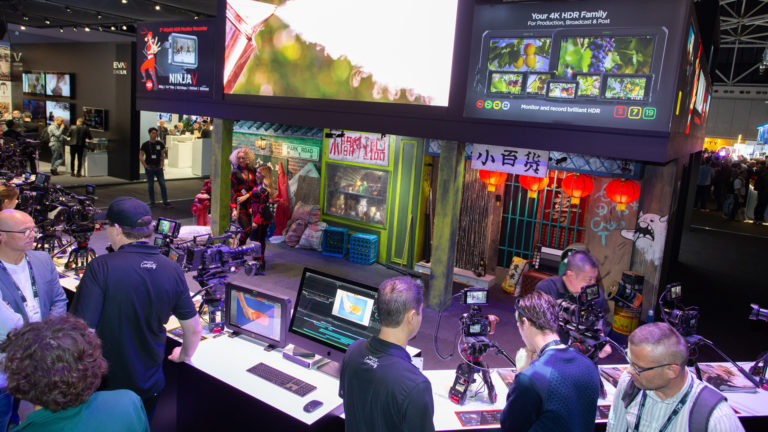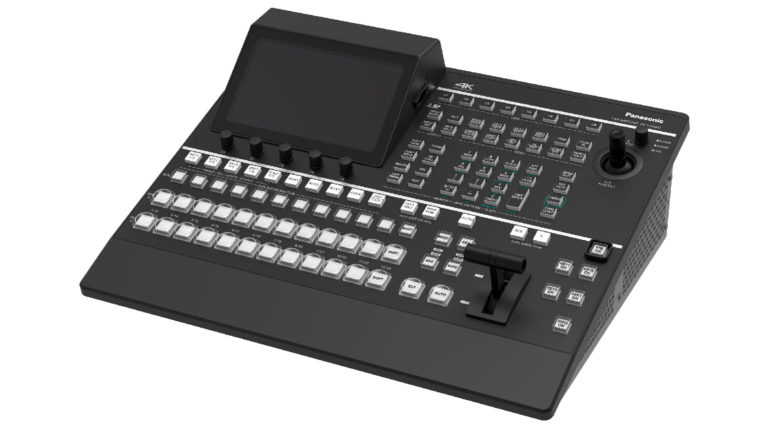Annual Post Confab Boasts Its Share of Stereo Skeptics
3D Channels Debut in June
This is also the 83rd annual “This is the year of 3D TV,” added Schubin, although he admitted that 3D has made numerous inroads in the past 12 months.
One of the obvious advances is DirecTV’s announcement that it would launch three 3D channels beginning this June. DirecTV VP of Broadcast Systems Engineering Hanno Basse described them: the 24/7 3D-only channel will show a variety of content, including documentaries, movies and concerts; a second channel will broadcast live sporting events and concerts; and a third will be devoted to VOD. “When we launch in June, there’ll be plenty of content,” said Basse, who admitted that adoption of 3D TV will be slower than it was for HD.
DirecTV will broadcast 3D in frame-compatible side-by-side format, supported by most new 3D TVs. “We have already proven that our existing infrastructure (head end and boxes) supports this format with minimal modifications,” said Basse. “Customers can use their existing HD STB but need a 3D-capable TV set.”
3D Skeptics
The rest of Hollywood may be abuzz with the wonders of 3D films and TV, but attendees at the HPA Tech Retreat are the engineers and technologists responsible for making the production, post and distribution chain work, which explains why the skeptics abounded.
The two speakers who sounded serious notes of caution regarding 3D were UC Berkeley professor Dr. Martin Banks, a specialist in human vision, who talked about some of the health issues that can arise from 3D viewing, and European Broadcasting Union head of new technology David Wood, whose presentation was titled “Are You Nuts?” Woods, who called himself a “long-time 3D enthusiast,” had the experience of bringing 3D programming to UK viewers in the 1980s. At the Tech Retreat, he made a strong point that not enough research had been done on 3D TV. He asked whether 3D ever turns from wow to ho-hum. “It’s a question that perhaps we don’t want to ask, because we might not like the answer,” he said. “Is there a tiny chance that the public gets tired of it?”
Wood brought up other unasked questions: How does 3D change viewer behavior? Do they view for longer or shorter times? Is watching it calming or stressing? Is there more or less retention of what you see? Is there more or less emotional involvement? “We looked at all these questions carefully with HD and we had the answers, but we don’t have [them] for 3D,” he said.
He also asked which organizing body should set 3D standards, whether there needs to be a worldwide standard, and whether the complexities of 3D production had been worked out. More importantly, he asked who in this chain was looking out for the interests of the end viewer? “3D will never die: it keeps coming back, like a politicians promise,” he said. “If 3D TV ever had a chance to succeed, it’s now. The quality will be better than it has ever been. But is that enough? We owe it to ourselves to research the economics and behavioral issues. We owe it to the public to research the psycho-physical effects.
Mobile TV
A panel on mobile TV, which I moderated, considered the variety of ways that users can receive video programming on handheld devices. GOTV Networks Thomas Ellsworth talked about his company’s several-year experience in distributing video content to mobile devices, as Rubber Duck Media Lab’s Paul Childers described optimizing video for mobile content providers around the world. ATSC VP of Standards Development Jerry Whitaker explained the technological underpinnings of Mobile DTV and revealed that seven U.S. broadcast stations are already airing content on mobile devices. He estimates that 100 TV stations will be broadcasting to mobile by the end of 2010.
Farewell to Packaged Media
A panel on the future of packaged media, moderated by Raging River Corporation COO/CTO Steve Cohen, predicted the demise of the brick-and-mortar media outlet in favor of kiosks and downloads. “2005 was the peak of packaged media,” said Cohen. “In 2010, up to 40,000 kiosks will be in play.” But Jim Taylor, SVP & CTO, Sonic Solutions, and Chair of the International Digital Media Alliance, noted that although the transition to electronic media is happening, “there are still over 2 billion DVD players out there.”
Broadcasters’ Report
A panel of broadcasters updated their networks’ technological challenges and advances. CBS VP of Engineering and Advanced Technology Bob Seidel described the iPhone app to watch CBS news, adopted by the network’s 13 owned-and-operated stations. CBS also announced a deal with Rentrak to begin gathering metrics for mobile usage. CBS content can also be seen on Qualcomm’s mobile platform, FLO TV, and other mobile networks. “But you have to authenticate the audience or you don’t have a business,” Seidel warned. NBC Universal’s Thomas Bause stated that NBC intends to bring its content to all possible screens, including mobile. “Mobile broadcasting utilizes existing investment in TV station infrastructure, with a low incremental cost to add,” he said. “It’s a new service for public and new revenue for broadcasters.”
Jerry Butler, Director of Interconnection Projects at PBS, reported being “very active” in Mobile DTV and said he is also in discussions with FCC with regard to broadcast/broadband strategy. On the web, PBS recently launched a PBS Kids Preschool channel and had 88 million streams in the first month. Richard Friedel, executive vice president and general manager of Fox Networks engineering and operations, described Fox’s experiences with the DTV transition, including issues with inconsistent loudness. “Program producers must create shows [while] recognizing [that] interstitial material (ie, commercials) will be inserted.”
As to broadcasting 3D, Friedel reported that Fox has already done some 3D broadcasting and is committed to broadcasting the Major League Baseball All-Star game in July in 3D. CBS, said Seidel, is sticking its toe in the water. “We announced we’d contribute some 2D content for upgrade to 3D for DirecTV,” he said. “But there’s no way to broadcast it without disenfranchising the existing audience.” He also questioned whether stations – after multicasting and mobile – had enough bits left to handle 3D.
Brewing Spectrum Wars
Washington attorney and insider Jim Burger of Dow Lohnes described the looming battle ignited by the wireless industry’s move to mobile broadband. “The wireless industry has urged the FCC to identify 800 MHz of spectrum for mobile broadband,” he said. “Where is it going to come from? Broadcast? Satellite? FCC Chairman Genachowski acknowledges there are challenges.”
From the broadcaster’s point of view, the wireless industry is engaging in a spectrum grab. The wireless industry is being pressed to use its existing spectrum more wisely. The stimulus bill requires the FCC to submit a “National Broadband Plan” to Congress in March. The “official” meaning of the document is unknown, said Burger, who observed that the FCC commissioners may not vote on the plan, and a “spectrum inventory” bill from Congress may come later this year. Let the lobbying begin!
Replacing the CRT Display
Describing the “tyranny of dark rooms,” Dolby senior director of image technology Dave Schnuelle gave what he semi-jokingly called his 15-minute rant against CRT displays. “There’s a mismatch between what we see in the mastering suite and what consumers see,” he said. “There is considerable difference between the technology we use to master these media and how we display them.” Dolby is building a test reference monitor that is brighter and has fixed pixels (MTF) and a color gamut similar to consumer devices.
Pete Putman of ROAM Consulting also revealed the results of his “science experiment” to use a low-cost plasma TV – in this case a $2,000 Panasonic TH-42PF11UK – as a reference monitor. Putnam calibrated it for the best dynamic range performance with the widest uncompressed and consistent grayscale without clipping or crush. “It worked a lot better than expected,” he said. “It demonstrated good dynamic range performance, stable gamma, and consistent but not perfect RGB tracking.” To fine-tune the grayscale performance, Putnam turned to Cine-tal, whose Davio platform generates a cineSpace profile for monitor-specific correction of each display.
Conclusions: Off-the-shelf plasma displays are suitable for use as evaluation monitors but they must be calibrated for best range; brightness is sufficient for post and grading facilities; and color accuracy using Davio software tweaks is comparable to reference-grade CRTs. “Best of all, it’s a very cost effective solution,” he added. A show of hands in the audience revealed that many post houses are already using plasma monitors somewhere in the facility.
Restoring Classic Animation
If you think you’ve seen classic Disney cartoons as they were originally screened, think again. Walt Disney Studios executives Sara Duran-Singer, senior vp, worldwide post production, and Theo Gluck, director of library restoration and preservation, gave a dramatic demonstration of the value of going back to the original elements-even if that’s volatile nitrate film.
Disney Studios is in the middle of a multi-year project to do full 4K scans and full digital clean-up, working closely with Lowry Digital for restoration. Fantasia is currently getting the full digital treatment, the 10th title thus far. For the first time in decades, Disney is going back to the nitrate negative, which is between 50 and 75 years old in many cases. Though some nitrate has deteriorated beyond salvation or is missing, the elements available, after a 4K scan, have revealed a level of detail in each cel previously not seen.
“The big breakthrough was putting up the original nitrate negative and scanning it,” says Gluck. “The sharpness is there that you don’t have from the intermediate transfer. The line detail and line art is much more visible. Also the background is more detailed. The other thing that became apparent was the color shifts of all that intermediate stock. We had to do weeks of research to find the real color for our D-Cinema timing. We looked at original backgrounds and cels, pored over books, worked with animators. We got true color accuracy by going back to that original nitrate.”
The results have to be seen to be believed. After a day of focusing on the latest in technology, it was a humbling reminder of the beauty and longevity of film.
Did you enjoy this article? Sign up to receive the StudioDaily Fix eletter containing the latest stories, including news, videos, interviews, reviews and more.










Leave a Reply